-
MODINA Showcases 2025 – Kino Šiška (SI), 26-28/Nov

The 2025 round of MODINA Showcases continues in Kino Šiška (Ljubljana), on 26, 27 and 28 November. It includes the following performances and seminar: The showcase is part of the broader Cofestival 2025: https://cofestival.si/2025/en/program/ Photo: NINO, by Máté Kalicz
-
MODINA Residencies 2025 – Videos

The 2025 series of dance & tech residencies from our project Modina are now over. You can watch video showreels of the 5 residencies here: https://www.youtube.com/playlist?list=PLgyiwM1Uzoml4GdJMtTzraWwcudlnh-vM And in the autumn/winter you will be able to see these performances in Tallinn, Düsseldorf, Ljubljana, Budapest and Bucharest. Thank you to all artists and partners involved. Project co-funded…
-
SFDCANBAC++ demos and code
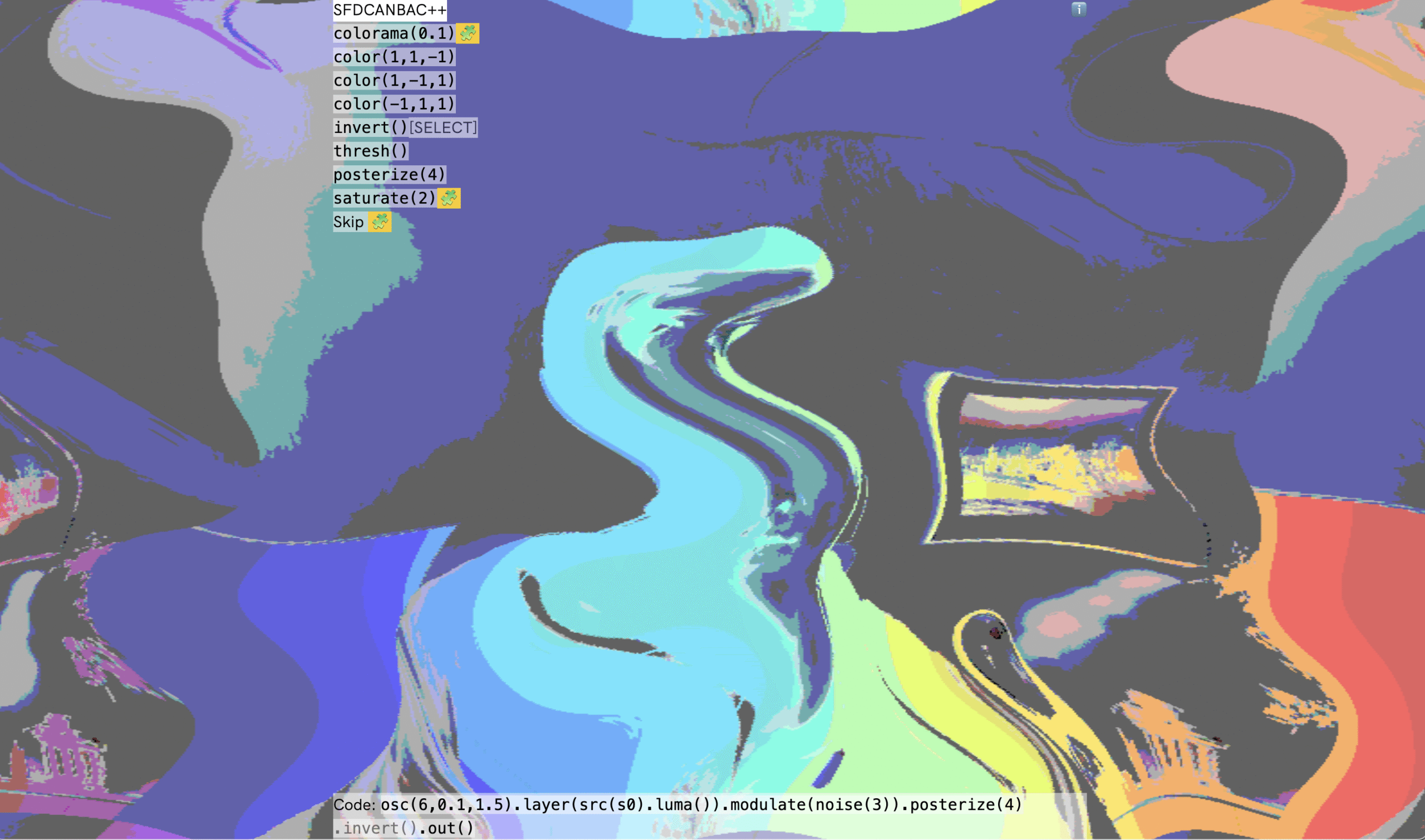
SFDCANBAC++ project Source code and artistic direction by naoto hieda & jorge guevara, developed during the MODINA residency for the SFDCANBAC++ project – Hydra Code Builder & Generator – Graphical interface to procedurally generate Hydra code via the selection of visual inputs and modifiers; these continuously pass through a neural network, modelled to provide parameter inputs…
-
Videos from MODINA Showings 2024
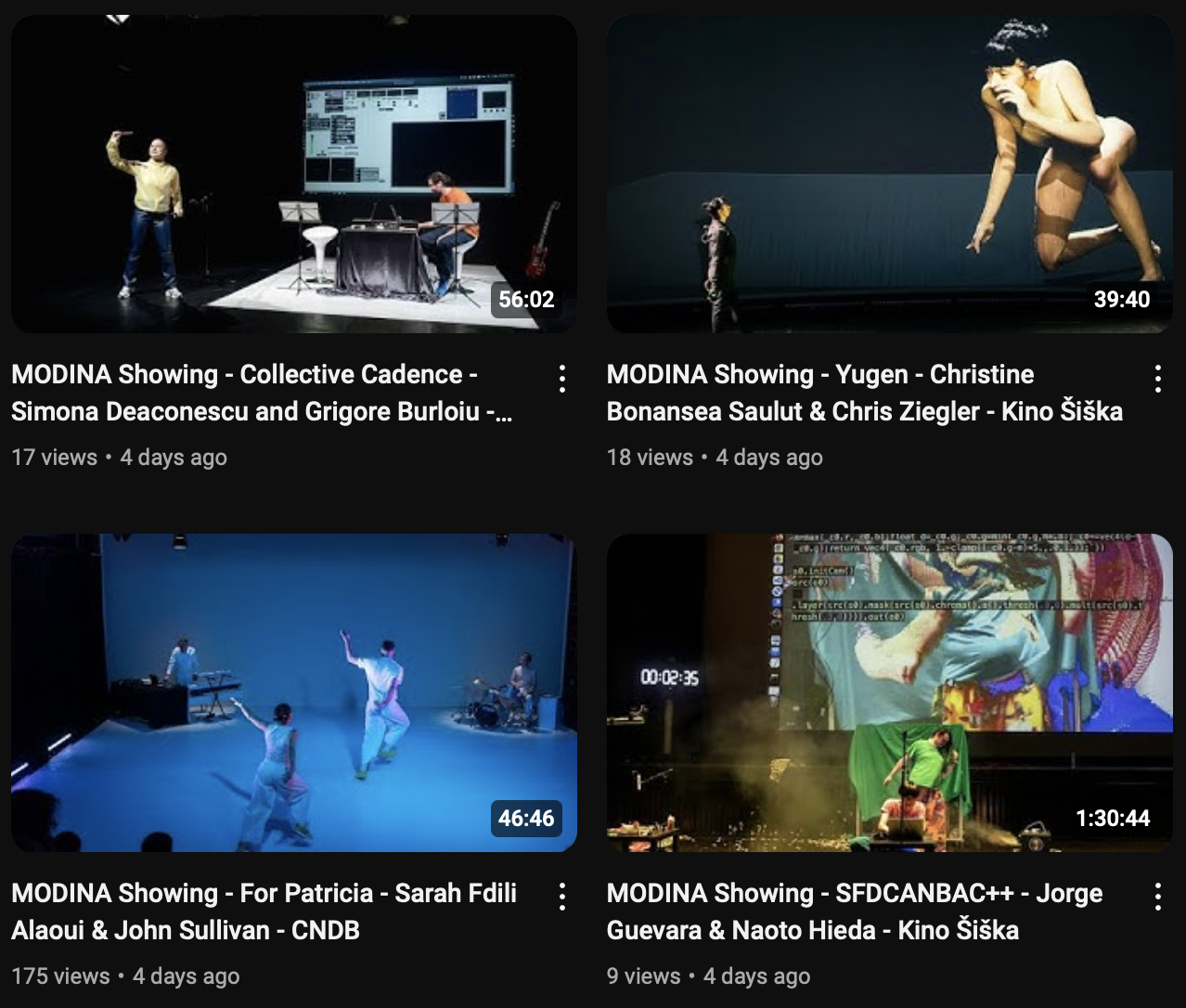
Full videos of the public showings from all five MODINA 2024 projects are now available online. More information on the projects: https://modina.eu/projects/ Thank you to all the artists involved, and to our project partners as well. MODINA is co-funded by the European Union.
-
MODINA Networking meeting
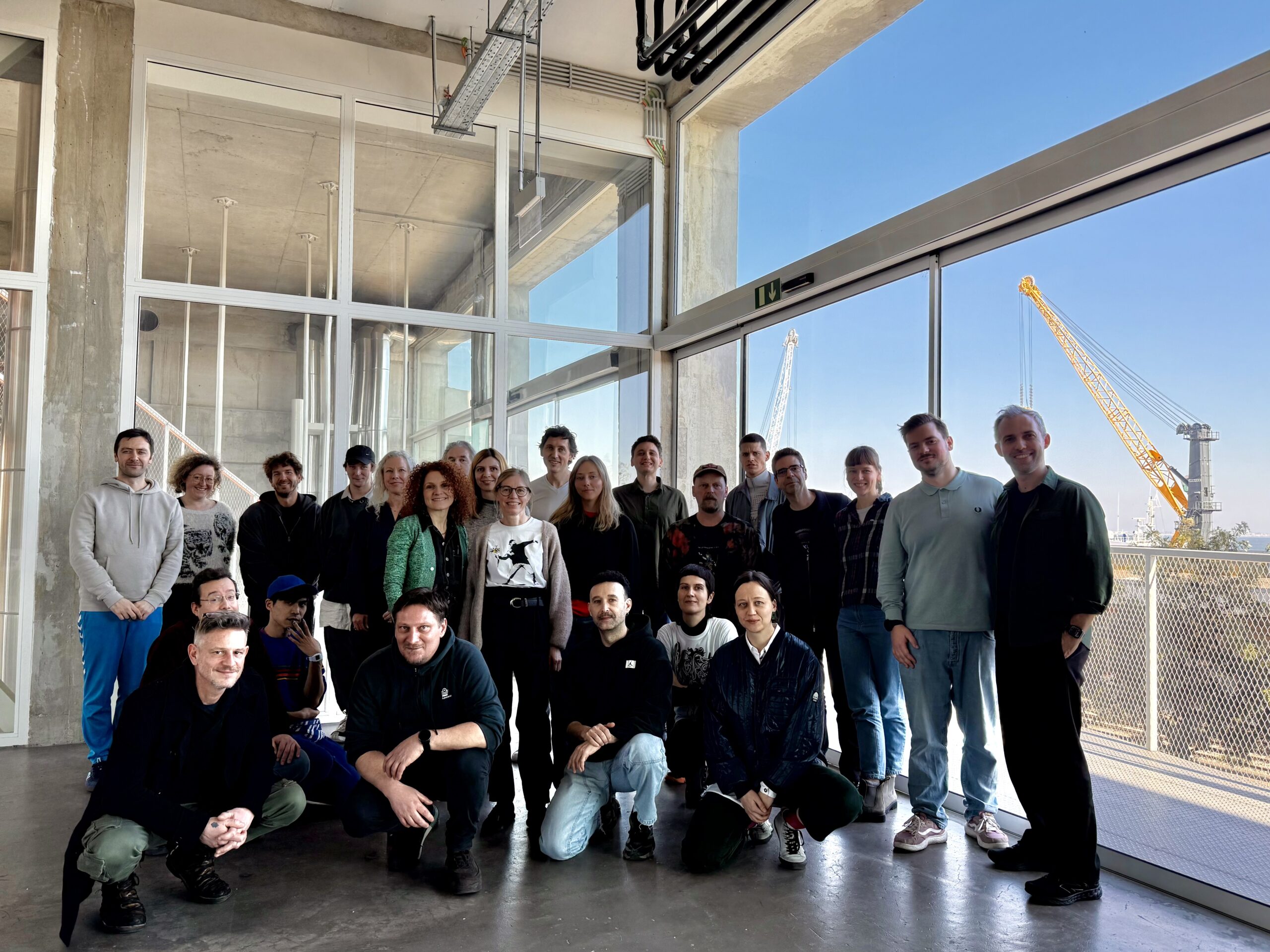
On the 15th and 16th of January 2025, MODINA hosted its second cycle networking event at ITI/IST-ID (Lisbon). We gathered together with the five artist duos made up of choreographers and creative technologists selected from our second call for residencies (from 91 duos applying). Seventeen representatives from partnering institutions also took part, who will be…
-
Videos from MODINA Seminars 2024
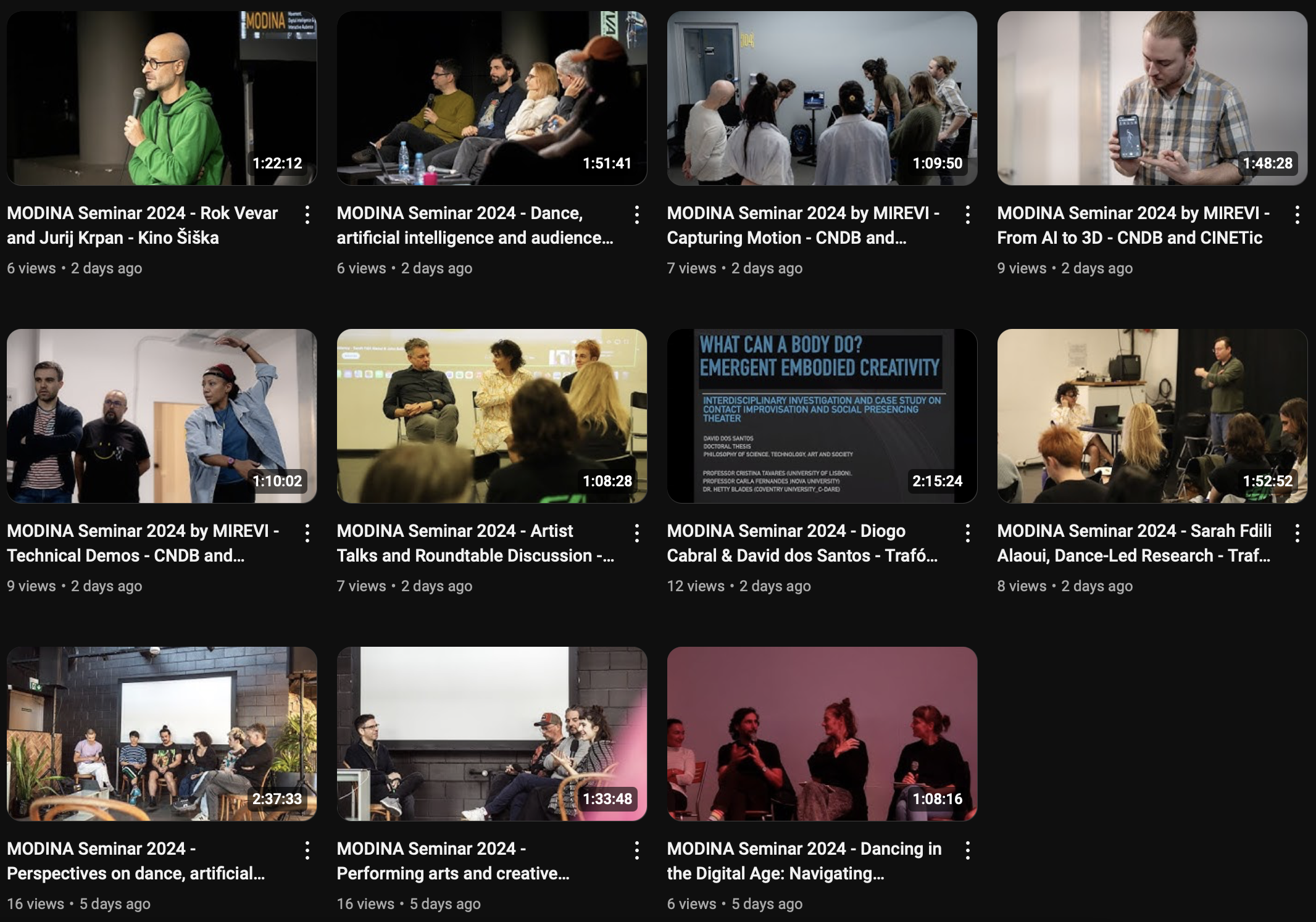
We have now published videos from the 5 MODINA Seminars of 2024 to our YouTube. There are 11 videos, a total of 18 hours of documentation. The seminars were composed of artist presentations, discussions, theoretical presentations and practical hands-on sessions. They were organised by the 3 academic institutions of MODINA and hosted by its 5…
-
Visit of Nick Bryan-Kinns (UAL) to Tallinn University
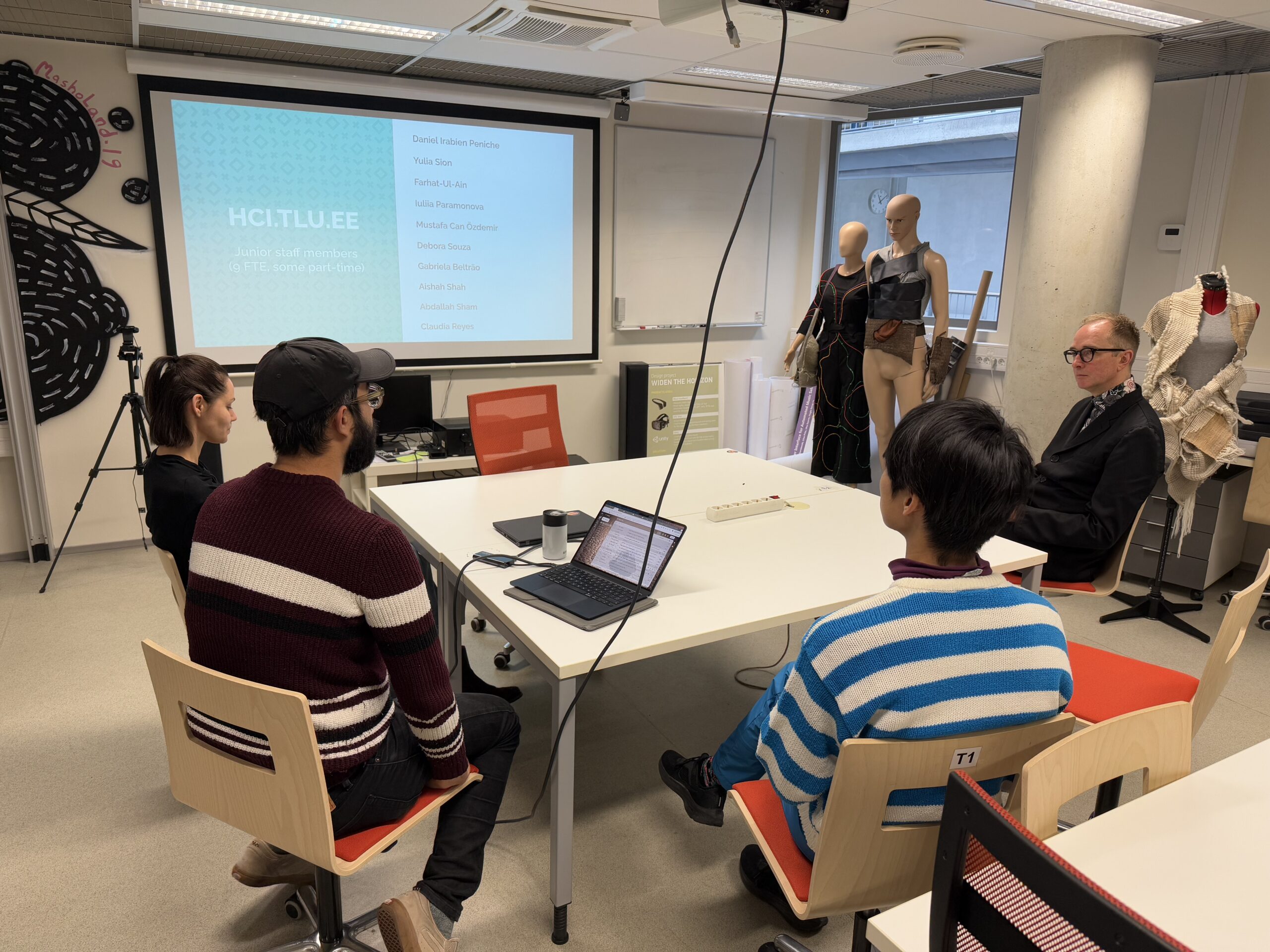
On the 15th of November, we had the visit to Tallinn University of Nick Bryan-Kinns, Professor of Creative Computing at University of the Arts London. The visit served several purposes: to discuss matters related to the UKRI-funded project Music Responsible AI, of which Nick Bryan-Kinns is Principal Investigator and Tallinn University is a partner in,…
-
Still Moving
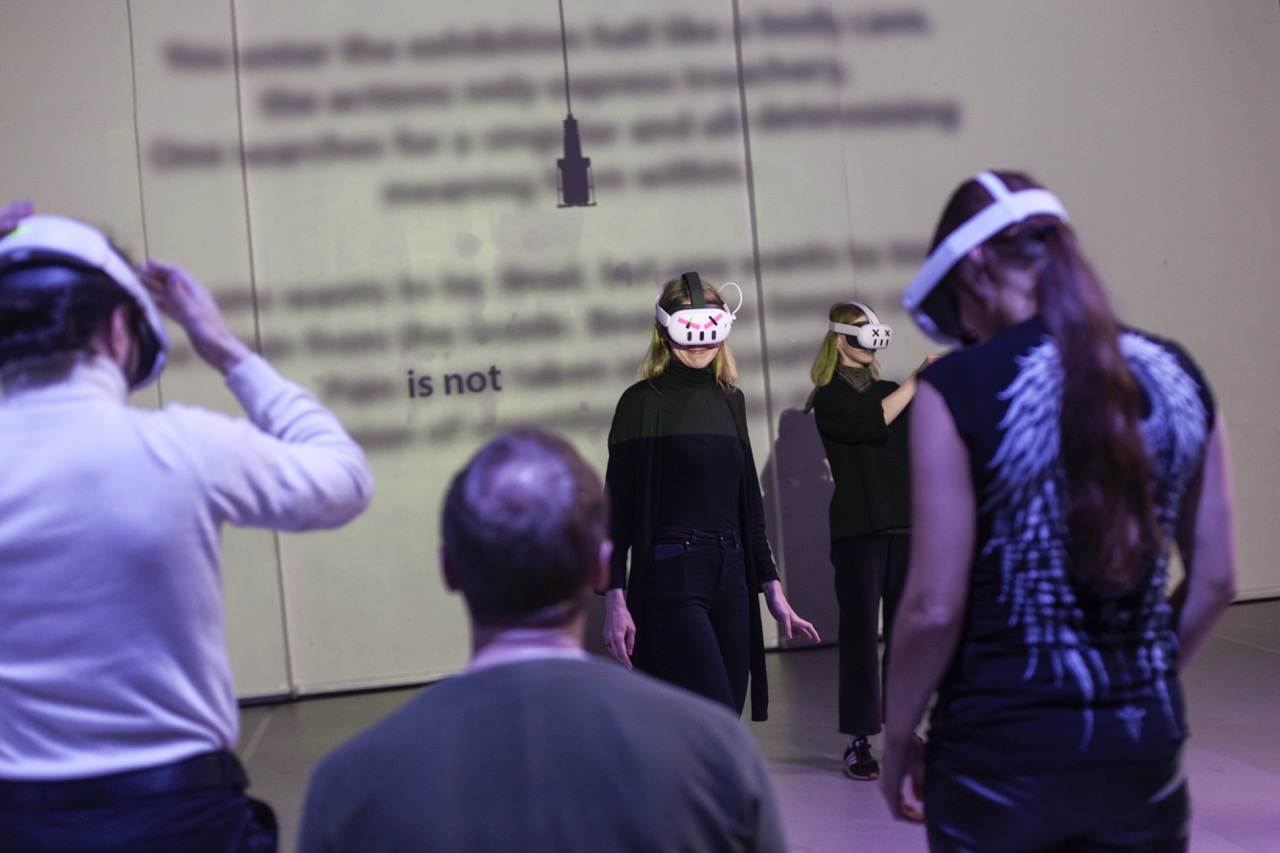
::Project by Liis Vares and Taavet Jansen:: Still Moving invites you into a space where instinctive physicality meets linguistic thinking, using mixed reality (MR). The project, part of the larger Held in Human series, explores the meaning of presence and “being in a body” in a contemporary world where technology significantly extends and mediates human experience. Equipped with…
-
NINO
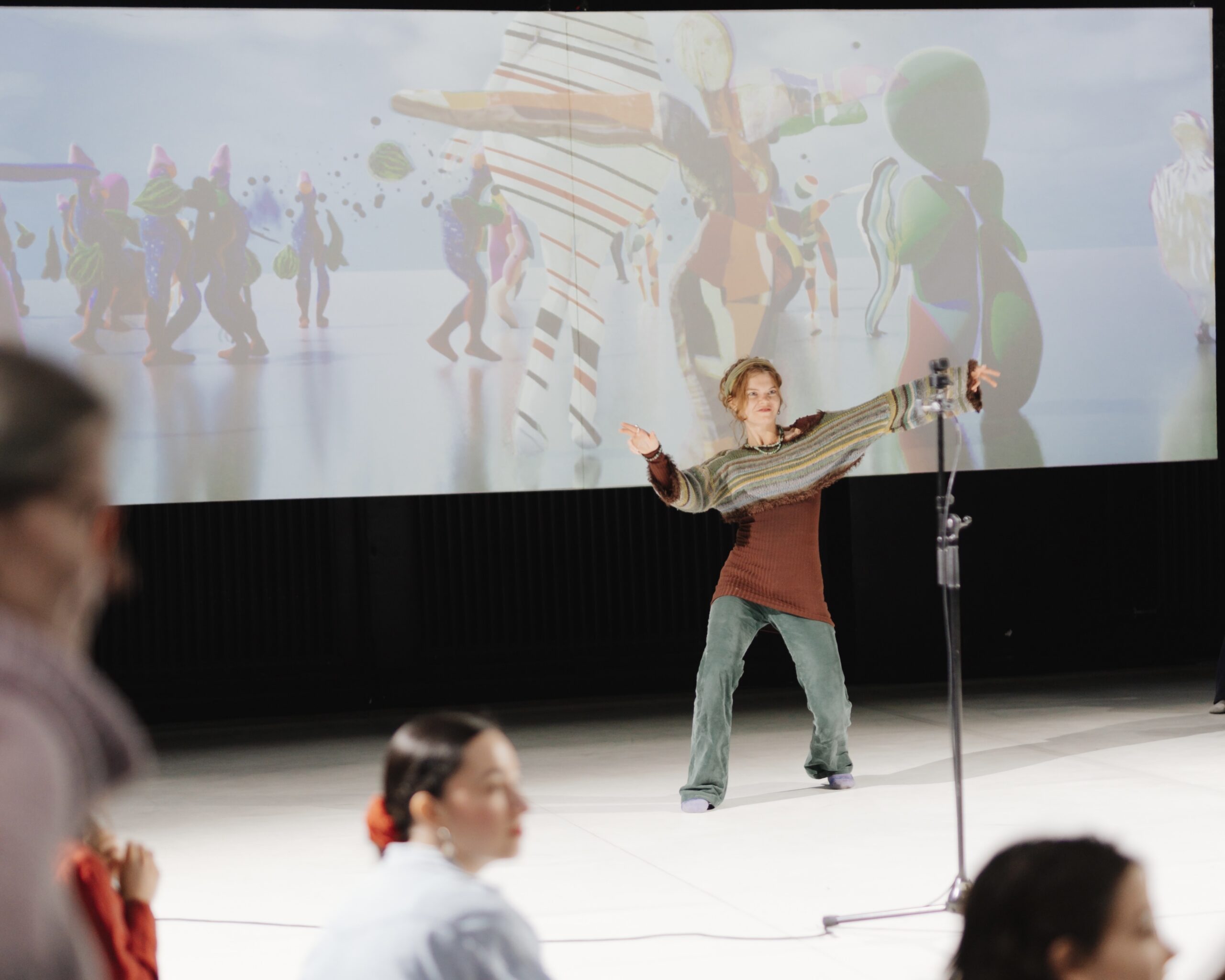
::Project by Bruno Martelli and Ruth Gibson:: Shadows play on weathered textures, landscapes both natural and surreal, light dances on surfaces virtual and visceral. Avatars breathe, embodying the earth, sky, and the storm within, drifting between worlds, animated by the unseen currents of a dancer’s breath, captured in the pulse of motion. Here, the audience…
-
The Field / Gaitless
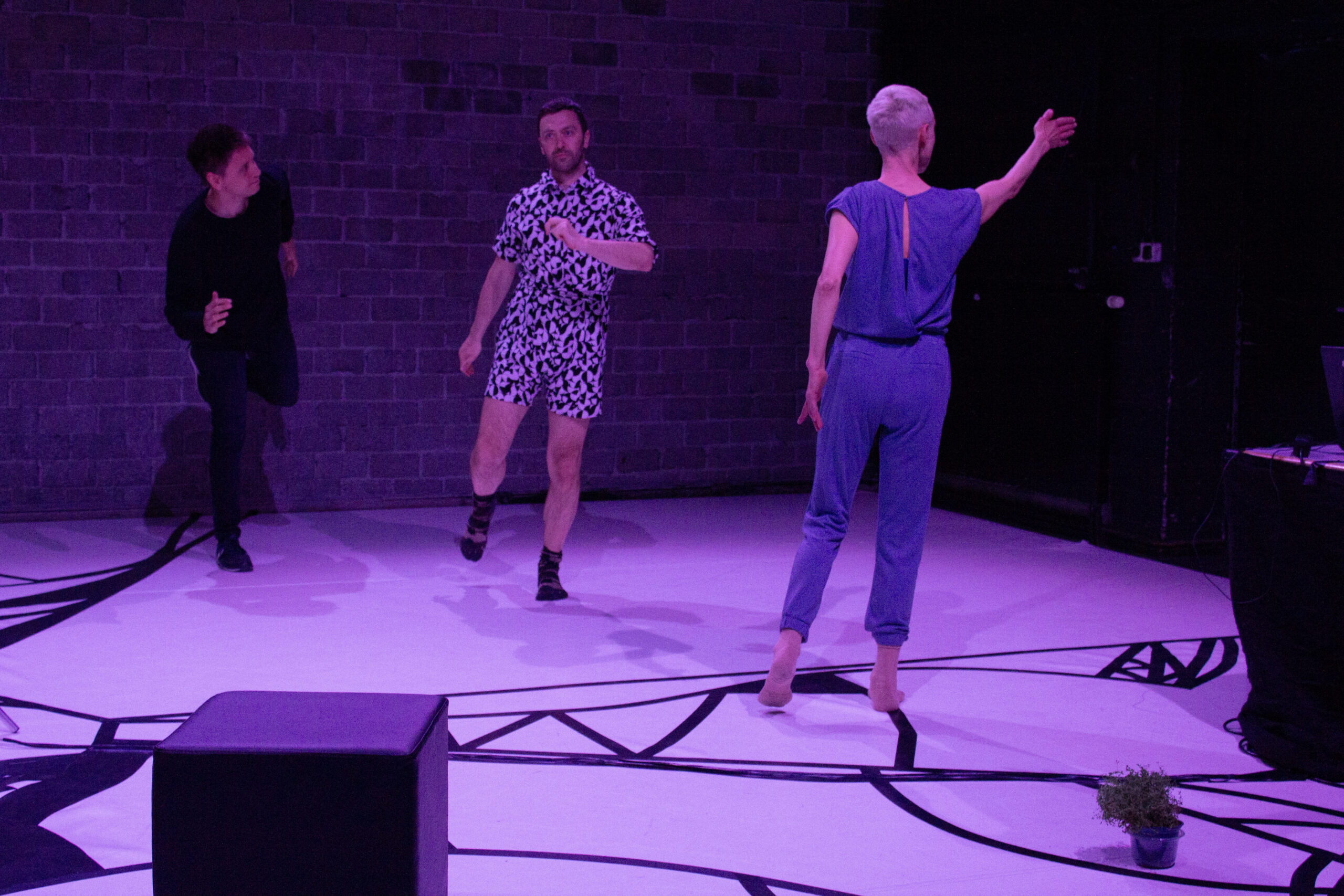
::Project by Marko Milić and Uroš Krčadinac:: How could we be moved with all this data and technology around? Could science emphasize the awareness of our physicality, could it be translated into a dance language or choreographies and could it be systematized as a participatory installation? We are about to find out. The Field /…
-
Baby

::Project by Viktor Szeri and Tamás Páll:: Baby is a research-based multimedia performance project that integrates choreography with multi-modal AI technologies to explore the functioning of art collectives as a form of care-work and an alternative to the nuclear family model. The project’s point of departure is Hollow, a multidisciplinary group Viktor Szeri and Tamás…
-
This Is Unreal
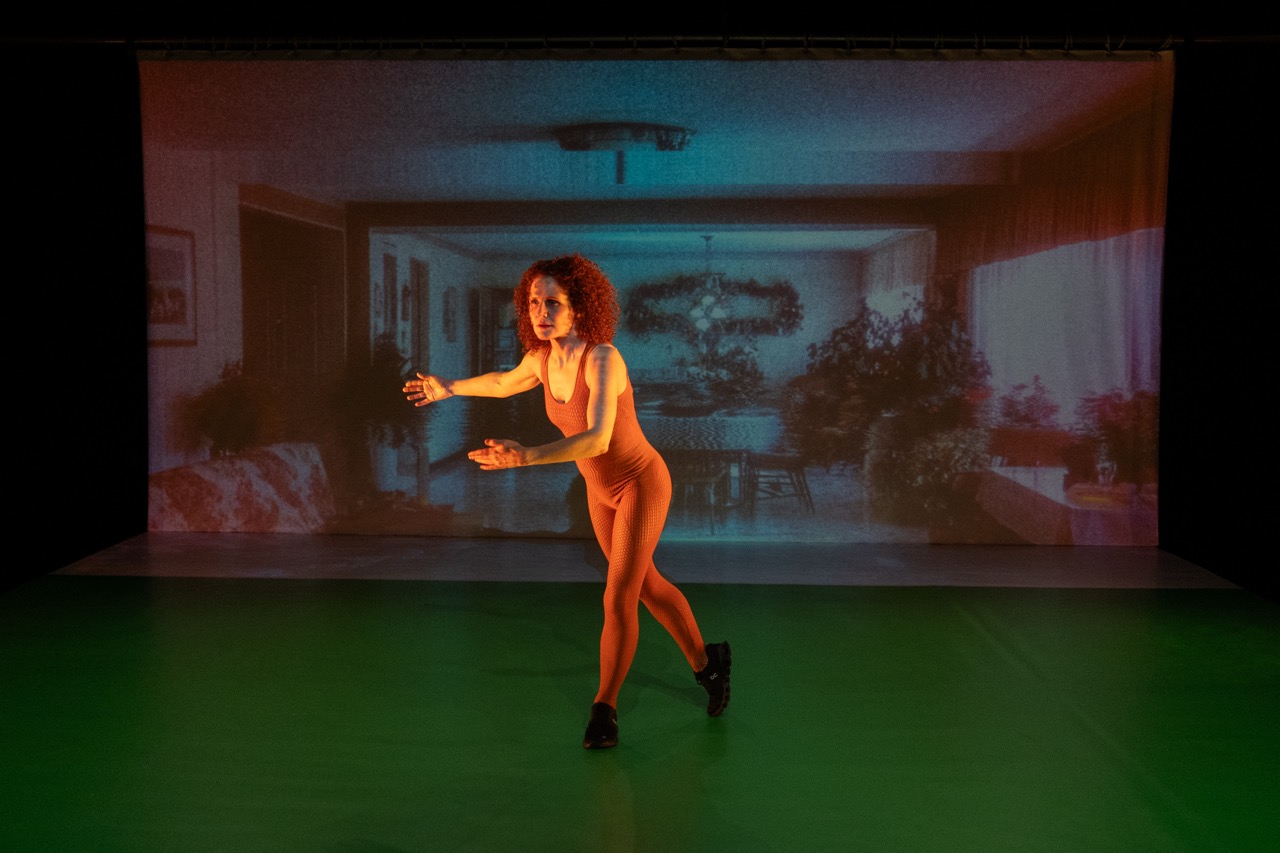
::Project by Pierre Godard and Liz Santoro:: “This Is Unreal” explores the intersection of dance, theater, and contemporary technologies like artificial intelligence, clones, and deepfakes. Through text and movement, Liz Santoro inhabits a world where the lines between human and machine, real and virtual, blur. The performance delves into the unsettling implications of AI on…
